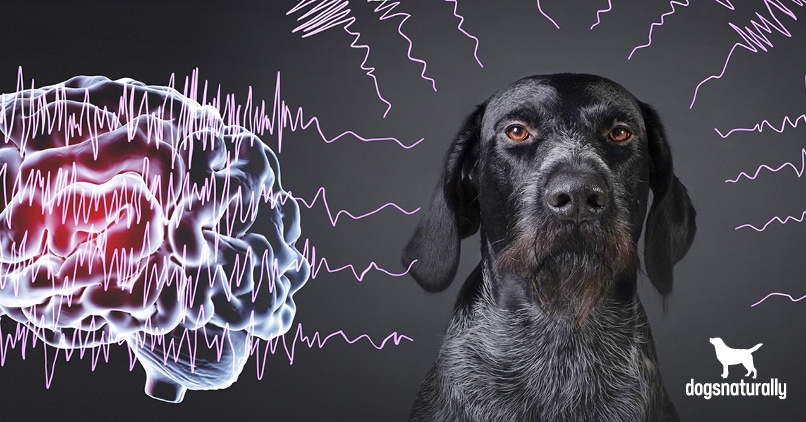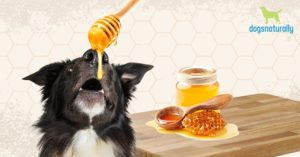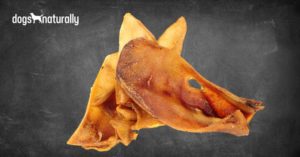Does your dog have epilepsy? As a veterinarian, epilepsy is the neurological disorder we see most often in everyday practice. Epilepsy causes seizures that result from abnormal bursts of electrical activity in the brain.
Can dog food cause seizures? … there’s evidence that dog food can possibly cause seizures and epilepsy.
What Can Cause Dog Seizures And Epilepsy?
Seizures can be caused by various factors …
- Outside of the brain – certain medications like flea treatments, vaccination, ingestion of poisons, low blood sugar levels.
- Inside of the brain – damage, tumor, infection.
- Idiopathic – meaning there is no underlying medical reason causing functional problems in the brain … but something causes the neurons to over-fire.
In this post I’m going to focus on idiopathic epilepsy. When there’s no obvious medical reason for seizures in dogs, they can be hard to resolve.
Conventional Treatments For Idiopathic Epilepsy
Conventional treatments used to manage idiopathic epilepsy in dogs are drugs like:
- Phenobarbital
- Potassium Bromide
- Diazepam (Valium)
These drugs are ineffective, and they have many side effects. Drug metabolism affects several bodily processes and causes many unwanted signs. These include changes in your dog’s normal emotional state and mood.
Here are some other known side effects of these conventional drugs for seizures:
Diazepam
The drug works by blocking neurotransmitters in your dog’s brain, so it has a sedative effect. But the effect lasts just a few minutes.
It can cause adverse side effects like diarrhea, vomiting, loss of coordination, slowed heart rate or breathing. It’s not safe for dogs with kidney or liver disease.
Phenobarbital
This medication works by lowering the neuron activity in your dog’s brain.
It can make your dog very hungry and thirsty. It can cause weight gain, depression, lack of energy, restlessness and loss of coordination, vomiting and liver problems.
And Phenobarbital can have adverse reactions when combined with many other medications. So if your dog’s on any other drugs, check that they’re safe to use together. (Your pharmacist is usually the best person to ask about this.)
Potassium Bromide
The drug is often used with Phenobarbital. It’s an anti-epileptic drug that lowers seizure activity in the brain. But it can take up to 4 months before it accumulates enough to take effect.
It can cause sedation, loss of coordination, increased urination, hunger and thirst, restlessness, nausea and stomach upset.
Other Problems With Anti-Seizure Drugs
- It’s challenging to find the right dosage. Too much medication becomes toxic, while insufficient levels won’t control dogs’ seizures adequately.
- If your dog is on any of these drugs, he must be carefully monitored. Your vet should perform regular tests for medication levels in the blood.
Fortunately, there are better, natural ways to manage your dog’s idiopathic seizures.
Caution: if your dog’s currently on any of these conventional anti-seizure medications, don’t stop them without talking to your vet about how to do it safely.
The key steps in managing epilepsy are: reducing environmental triggers and feeding a proper diet. Let’s talk about those things in more detail.
RELATED: Cluster Seizures In Dogs
What Can Trigger A Seizure In Dogs?
Pay attention to environmental factors that trigger your dogs’ seizures. Once you make the connection, you can reduce his exposure to these triggers.
Triggers can be things like products you use around the house, foods, medications and stress. The full moon can even be a factor!
Avoid using chemical products in your home and yard.
- Use natural cleaning products
- Avoid scented candles and products with artificial perfume
- Don’t smoke around your dog
- Be careful with loud music or flashing or bright lights
- Make sure you don’t have any plants or flowers that could be toxic.
- Don’t use chemical pesticides and herbicides in your yard
Caution: Avoid pharmaceutical flea and tick or heartworm preventives. These drugs work by paralyzing the parasites nervous systems … which means they can also affect your dog’s nervous system.
Foods To Help Dog Seizures
Correct nutrition plays an important role in managing idiopathic epilepsy in dogs.
If your dog has idiopathic epilepsy, it’s vital to feed him an all-natural, fresh raw diet. Whenever possible, use free-range, organic ingredients. Your dog’s diet should consist of …
- Raw muscle and organ meats
- Edible bones
- Eggs
- Seasonal fresh green vegetables
- Small amounts of fruits like berries and apple
- Healthy seeds, oils and herbs
So, food can help with epilepsy. But can dog food cause seizures?
Harmful Ingredients
It’s not just that a fresh, whole food raw diet is better for your dog’s overall health. There’s a substance in many foods … that can aggravate your dog’s tendency to have seizures.
That substance is glutamate. It’s an amino acid that’s in many foods. It’s also a neurotransmitter that’s naturally produced in the body. Glutamate is important for brain development and memory. But high levels of glutamate are associated with diseases like Parkinson’s, multiple sclerosis and Alzheimer’s.
Recent studies indicate that seizures draw glutamate out of the brain tissue cells, damaging the cells.
This means that reducing and avoiding foods rich in glutamate may improve seizures and reduce their frequency. This can be especially helpful in idiopathic epilepsy – when there’s no underlying medical problem.
So, which foods should you avoid to help manage your dog’s seizures?
What Foods Can Cause Seizures In Dogs?
The following foods contain a lot of glutamate.
Grains
Wheat, barley and oats have the highest glutamate content. Corn and rice have lower glutamate content, but should be kept to a minimum. Grains are a very common ingredient in commercial dry foods and treats … and sometimes they are listed as cereals.
Dairy Products From Cows’ Milk
Casein, the protein in cows’ milk is 20% glutamate by composition. Common dairy products for dogs are cheese chews and treats. Many people give dairy products like kefir and yogurt to dogs for their probiotic benefits. But don’t give them to your dog if he has seizures.
Beans
Soy, pinto beans, black beans, lentils. These legumes contain high amounts of glutamate. Soy is a filler in many commercial dry foods and treats.
Peanuts
Peanuts are very rich in glutamate. Many people use peanut butter as a dog treat or to stuff Kongs, etc. Peanuts not nuts – they are a legume, and you should avoid giving them to your dog.
Meats And Organs From Grain Fed Animals
Always choose grass fed meat sources.
Rabbit, Turkey and Oily Fish
These meats have high glutamate amino acid content. The best choice of meat for your epileptic dog is lamb. It has the lowest glutamate content.
Any Foods Containing Chemicals
Preservatives, taste enhancers, palatability factors, chemical antioxidants and colorants. Try to choose all natural and fresh foods. Even some pre-made raw diets have synthetic vitamins and minerals … look for additive-free foods instead.
The Best Foods For Dogs With Seizures
Encourage and introduce natural and fresh foods that contain:
- DHA: DHA is docosahexaenoic acid which has anti-inflammatory properties and plays a vital role in brain development. Sources of DHA are eggs and certain algae. Eggs are very low in glutamate.
- Vitamin E: It’s a natural antioxidant that protects neurons from oxidative stress and absorbs free radicals in brain. Foods rich in vitamin E suitable for dogs with epilepsy are fresh dark green leafy vegetables and certain seeds.
- Vitamin B Complex: Studies suggest that Vitamin B1, B2, B3, B6, biotin, folic acid and B12 may help in decreasing seizures. Vitamin B complex is found is eggs, fresh dark green leafy vegetables, nutritional yeast.
- Vitamin C: It supports the immune system and it is a natural antioxidant. It may decrease damage in brain tissue caused by seizures. Fresh kale, peppers, cauliflower, berries, rosehips are great sources of vitamin C.
- CBD oil: CBD Oil has been shown to reduce the number and severity of seizures in dogs with idiopathic epilepsy. It can prevent brain injuries which may occur during seizures and helps with brain tissue recovery after them. Always choose CBD oil made from organic industrial hemp with maximum THC of 0.3% and extracted at low temperature, free from solvents. Trust brands which can provide a certificate of quality and laboratory analysis of their product. Follow manufacturer’s feeding guidance and introduce CBD oil gradually to your dog’s feeding regime.
- Herbs: Chamomile, skullcap and valerian are great for reducing anxiety and relieving the stress associated with seizures. Milk thistle can support and protect the liver, especiall if your dog’s taking conventional anti-seizure drugs that have toxic effects on the liver.
Giving Herbs
Herbs can be given as a herbal tea, sprinkled dry over the food, or as a tincture. When using dry herbs to brew a tea, use 1 teaspoon per 1 liter of boiling water. Start with 60ml of the ready tea per 20lb body weight and gradually increase the amount of tea. If you choose to use dry herbs as sprinkles, start with small pinch per 20lb body weight. Always follow the manufacturer’s instructions when using tinctures – or ask your herbalist or holistic vet.
Gelatin
Gelatin is considered a brain-protective food because it is rich in glycine. Glycine is an amino acid that’s believed to protect brain tissue from damage associated with seizures.
Always choose unflavored, unsweetened gelatin derived from grass fed animals. Feed it as sprinkles over your dog’s food … or use the gelatin dog treat recipe below.
Dosing: When used as sprinkles, give twice daily in dose 1 ½ tsp for 10 – 20 lbs, 3 tsp for 25 -50 lbs, 6 tsp for 50 – 75 lbs, 3 tablespoons for 75 – 100 lbs or more body weight.
Bonus: Gelatin Dog Treat Recipe
Ingredients
- ½ cup unflavored, unsweetened gelatin from grass fed animals
- ½ cup of cold liquid (water, herbal tea or bone broth)
- 1-½ cups of boiling liquid (water, herbal tea or bone broth)
- ½ cup of low glutamate fruit or vegetable of your dog’s choice
Directions
- Put ½ cup of gelatin in a 1-quart bowl
- Add ½ cup of the cold liquid and let stand for few minutes to soften
- Pour 1-½ cups of boiling liquid over the softened gelatin
- Stir until gelatin completely dissolves (varies with brand)
- Put fruit or vegetable on the bottom of a pan or a mold
- Pour over the gelatin mixture
- Let it set
- Serve and enjoy giving your dog this healthy treat!
Instead of risky and possibly ineffective drugs to control your dog’s seizures … try choosing the right food and managing your dog’s environmental triggers.












